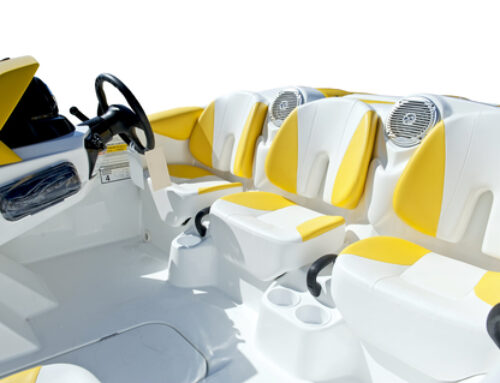Repairing, depreciating or writing off equipment for tax purposes
By Mark E. Battersby
In today’s economy, the question is not whether to fix or replace equipment, fixtures, business assets or even the building housing the marine fabrication business, but rather which path will be the most affordable. Will the marine fabrication business benefit more from an immediate write-off for repairs, or do dwindling profits this year mean smaller depreciation write-offs in later, hopefully more profitable, years? And which will be more rewarding?
Of course, there is also the question of what the Internal Revenue Service will allow. The tax collector’s power to reclassify an immediate expense deduction as a smaller series of depreciation deductions stretching over many years is yet another factor that must be considered.
Generally, the expenses of operating a marine fabrication business are fully deductible in the year incurred. In contrast, capital expenses may, at best, entitle the shop to depreciation deductions that must be spread over a number of tax years.
On the one hand, any legitimate business expenditure that does not create an asset or benefit the marine fabrication business for a period longer than one year is an “expense.” Many marine fabrication shop owners and managers believe that normal inspection, cleaning and testing, and the replacement of parts with comparable, commercially available and reasonable replacement parts are routine maintenance.
In the eyes of the IRS however, those expenditures are often considered part of capital improvements, the cost recoverable only through depreciation deductions. In fact, any expenditure that contributes to prolonging the life of any business property or equipment is considered a capital expense and must be treated and deducted over the same period as the underlying asset.
Whether expenditures are a deductible repair or a capital improvement often depends on the context in which the expenditure was made. If an expenditures was, for instance, made as a part of a general plan of rehabilitation, modernization or improvement to equipment or other business property, the expenditure must usually be capitalized, even though, standing alone, the expense would be currently deductible.
Under a unique “safe harbor,” maintenance performed on equipment or business property is generally not considered as improving that property, therefore making it currently deductible. Routine maintenance is those recurring activities that a marine fabrication business owner expects to perform to keep the equipment or property in an ordinarily efficient operating condition.
The tax rules allow repairs made at the same time as an improvement but which do not directly benefit it or which were made strictly because of the improvement, to be deducted as repairs. Using the IRS’s example, a company owning several trucks decides to replace the existing engines and beds with new components. All of these costs would have to be capitalized because they are so-called “restoration costs.” If the company decides to paint the truck cabs and replace a broken tail light (both repair costs if made separately) at the same time the new components are installed, the cost would be a capital expenditure. The company would have to capitalize the cost of painting (treated as an expense that directly benefits or is incurred because of the truck restoration). Of course, the company could currently deduct the cost of repairing the broken tail light (treated as an expense that does not directly benefit and is not incurred because of the truck restoration).
Among the IRS’s tax rules is another safe harbor, one designed to virtually guarantee the immediate deduction for repair and maintenance. The new safe harbor applies if, at the time the equipment or property was placed in service, the marine fabrication business reasonably expected to perform the activities more than once during the life of the equipment or business property.
For many marine fabricators, upholsterers and businesses, seeking an immediate expense write-off is the only strategy. Faster write-offs for “bonus” depreciation, the Section 179 deduction that creates first-year deductions or expensing for some capital expenditures temporarily inflates the write-off.
What about a troubled marine fabrication business, one that is struggling to keep afloat, or a new business, neither of which has much incentive to minimize taxable income and maximize current deductions? Everyone knows that the ever-vigilant IRS will quickly question any effort to “distort” the income of the marine fabrication business. Usually this means reclassifying a deduction claimed as an expense as a smaller depreciation deduction because results will be noted in a period longer than one year. Ignoring an immediate expense deduction is an option since it will not distort the marine fabrication operation’s income.
Would the same be true if an otherwise deductible expense were labeled as a capital expenditure and claimed over a number of years be an acceptable strategy? The complexity of the tax laws and the difficulty of that particular question are both enough to warrant seeking professional advice.
While far from being simple, the difference between the costs of maintenance or repairs and capital improvements seemingly boils down to the impact on the shop or business and its equipment and other business property. Spelling out a periodic schedule for maintenance and regular routine repairs can help.
Clearly separating routine maintenance or repair expenditures from a larger plan of rehabilitation or modernization can also help maximize the current tax deduction for maintenance expenses—if that will benefit the marine fabrication operation’s tax bill the most.
 TEXTILES.ORG
TEXTILES.ORG 





